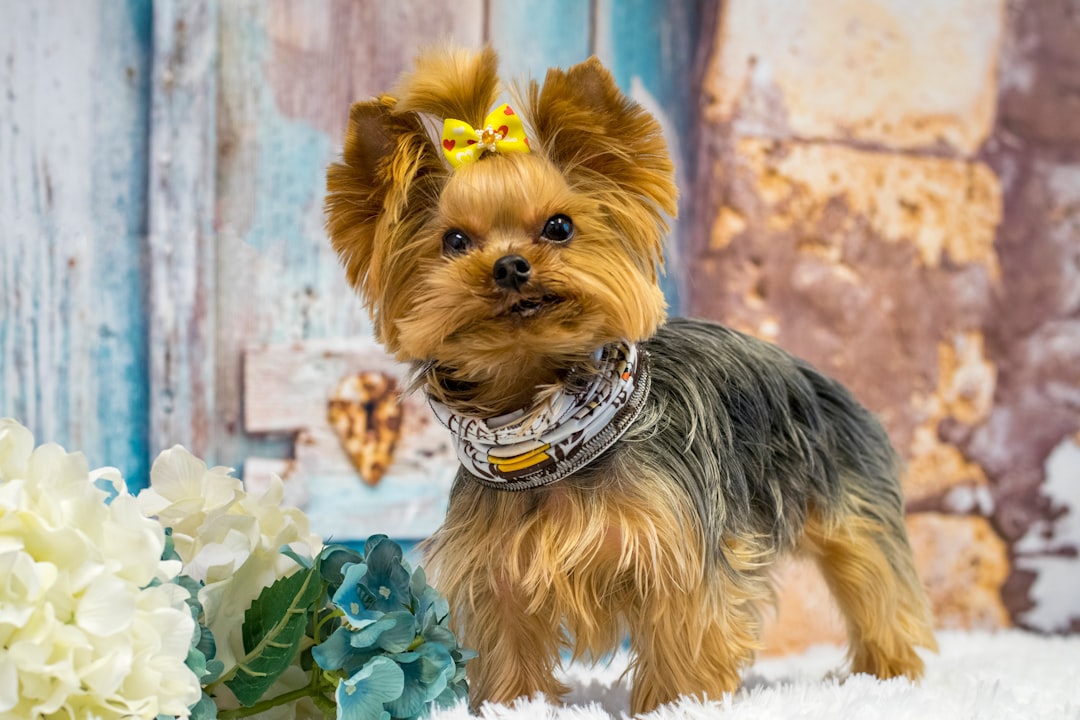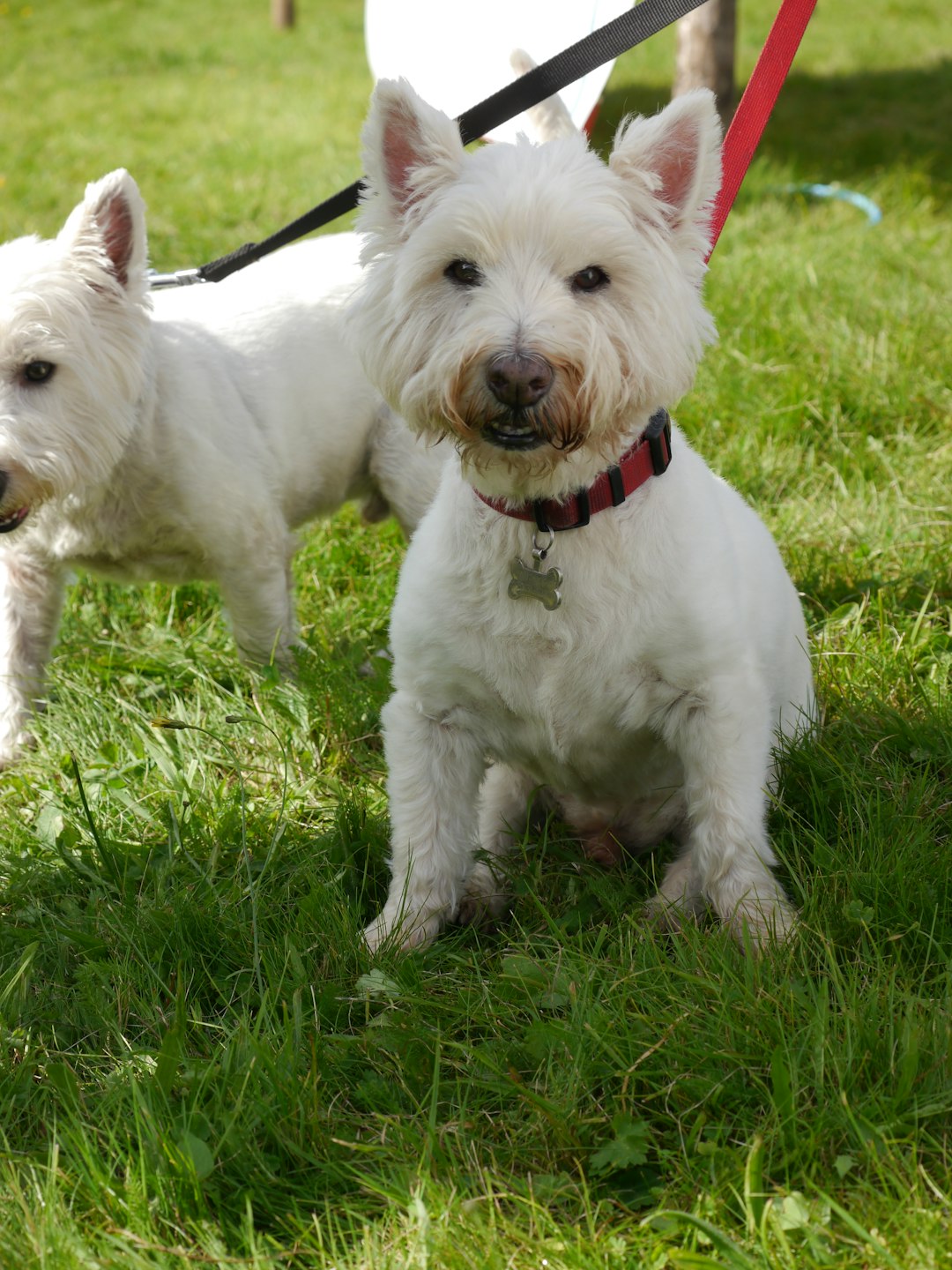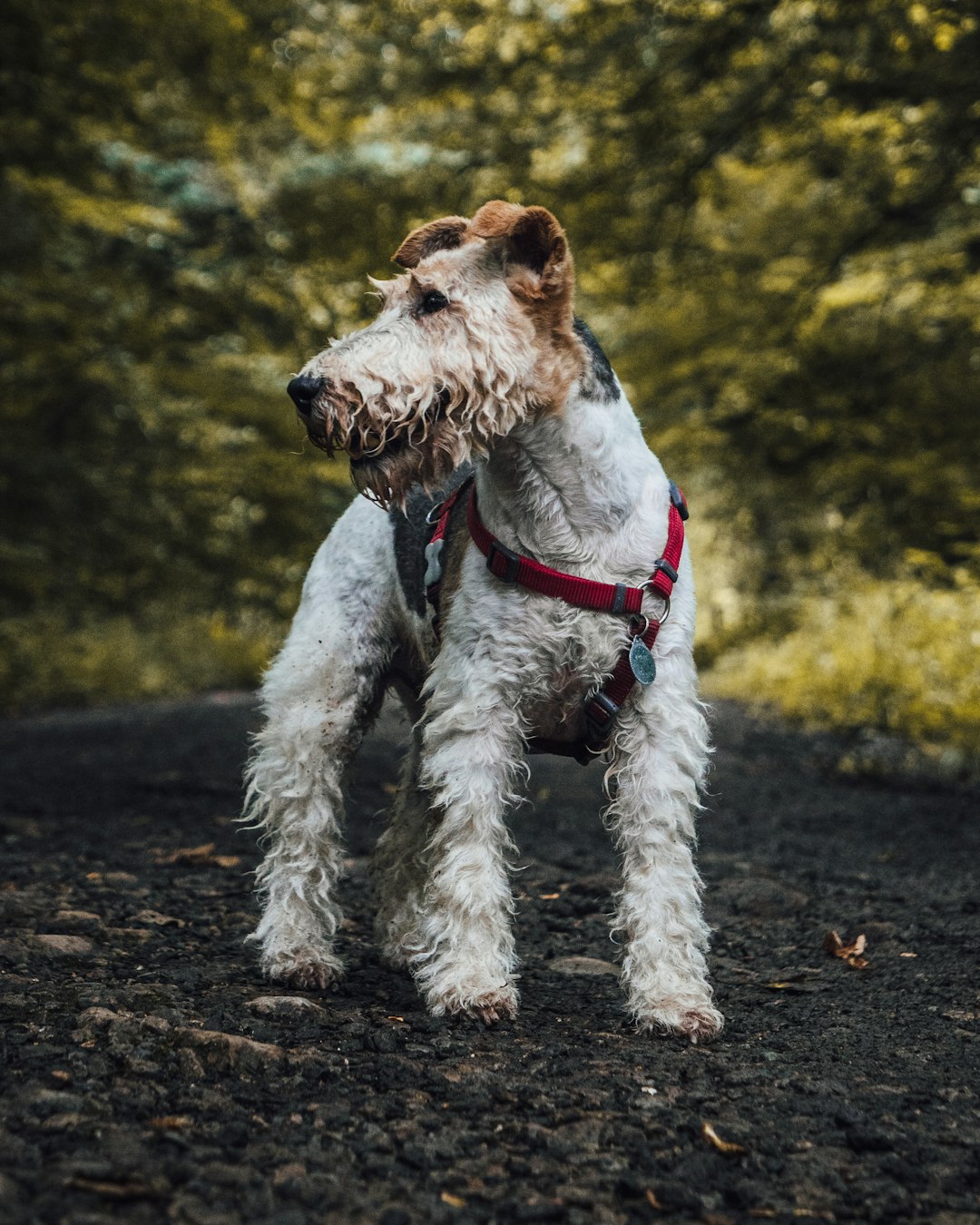Are you ready to pounce into the world of scary dogs? Buckle up! While some pups just want to slobber on your shoes, others resemble the canine version of a horror movie villain. With a little guidance, you can identify breeds that send shivers down spines faster than a jump scare. From their intimidating looks to their fierce barks, these dogs can certainly raise eyebrows— and heart rates! So, let’s embark on this tail-wagging adventure and unravel the truth behind the phenomenon of the scary dog.
Understanding Dog Breeds Associated with Aggression

When it comes to identifying scary dogs, you might picture teeth bared and a growl that could rival a dinosaur! However, not all scary dogs are built for villainy. Let’s dig deep into the savage world of our four-legged friends:
- Bully Breeds: These pups have a reputation, but often, they just want love—think teddy bear in a tough-guy costume.
- Rottweilers: Rotties love to protect their humans; just don’t mistake this for a bad attitude!
- Doberman Pinschers: These elegant dogs strut around like they own the place. Spoiler: They probably do!
- Pit Bull Terriers: Often misunderstood, these snuggle monsters just need a belly rub to unleash their cuddly side.
| Breed | Average Size | Most Common Misconception |
|---|---|---|
| Bully Breeds | Medium | They are all aggressive! |
| Rottweilers | Large | They can’t be family pets! |
| Doberman Pinschers | Large | They’re dangerous by default! |
| Pit Bull Terriers | Medium | They were bred for fighting! |
So, while some breeds might look intimidating, a little love goes a long way. Remember, even the scariest dog can have a soft spot for belly rubs!
Common Characteristics of Intimidating Dogs

So, you fancy yourself a canine connoisseur? Well, let’s put that to the test with some common characteristics of Scary Dog breeds. These traits can make even the bravest mailman consider a career change:
- Enormous Size: Think of a Great Dane that could easily fit in your front room—if only your house was a barn! Size matters, folks; it often intimidates innocent passersby.
- Muscle Tone: Ever seen a pit bull at the gym? Probably not, but trust us, these dogs are built like tanks. Their impressive physique can send shivers down anyone’s spine.
- Deep Bark: When a Scary Dog barks, it feels like the ground shakes. A yappy chihuahua just doesn’t cut it. You want a roar, not a whimper.
- Intense Gaze: The “I’m-staring-death-at-you” look can make a person rethink their life choices. Some dogs just have that piercing stare that could make even the bravest villain sweat bullets.
- Protective Instincts: A true Scary Dog comes equipped with a personal bodyguard mode. They’ll guard their turf like it’s the last pizza slice—no one gets near without a thorough inspection!
In short, if your dog possesses a mixture of these traits, congratulations! You might just have a Scary Dog on your hands. But don’t panic, with the right training and love, even the most intimidating pup can become a lovable giant!
The Role of Size in Dog Perception

Ah, size matters—especially when it comes to our furry friends. When it comes to the Scary Dog, the bigger the bark, the more intimidating it feels! However, let’s not let a fluffy coat and bulging muscles fool us; size can be deceiving. Here’s how:
- Larger Breeds: Think Rottweilers and Great Danes. They fill up your entire field of vision, sometimes making you wonder if you accidentally stumbled into a doggy version of Jurassic Park.
- Medium Breeds: Dogs like Pit Bulls can surprise you. Despite their medium stature, they often carry a hefty reputation that can send shivers down the spine—yours, not theirs!
- Small Breeds: Now, don’t let a tiny Chihuahua fool you either. With the right attitude, they can unleash a Scary Dog mentality that makes them look like they’re about to conquer the world!
In conclusion, while size plays a significant role in how we perceive a Scary Dog, remember that behavior and training are equally, if not more, important. So next time you see a hulking mastiff, ask yourself: is it really scary, or is it just a gentle giant who loves belly rubs?
How Socialization Affects a Dog’s Behavior
Ah, the age-old question of whether a scary dog is born or made! Spoiler alert: It’s mostly made. Just like you wouldn’t want a supervillain pup lurking in your back yard, if a dog doesn’t get the socialization it needs, it might just end up being a scary dog that howls at the mailman.
Here’s why socialization is crucial:
- First Impressions Matter: Just like humans, scary dogs form opinions fast! If they associate new experiences with fear, well, you better watch out.
- Playdates Are Important: Friendly interaction with other dogs teaches your dog how to “play nice.” Remember, a scary dog who thinks every dog is an enemy is a recipe for disaster.
- Human Interaction: Exposing dogs to a variety of people helps them become less wary. A well-socialized pup is much less likely to be perceived as a scary dog.
Quick Tips for Socializing Your Scary Dog:
- Start Young: The earlier, the better!
- Gradual Exposure: Introduce new experiences slowly.
- Positive Reinforcement: Treats are your best friend, just like your dog!
So, don’t let your future fluffy overlord become a scary dog – socialize like there’s no tomorrow! 🐕💥
Recognizing Body Language in Scary Dog Breeds
Oh, the drama! When it comes to scary dogs, their body language can send you running faster than a squirrel at a dog park! So, let’s decode their messages before you end up in a cringe-worthy situation.
Here’s what to watch for:
- Ears: If they’re perked up like satellite dishes, your scary dog might be curious. But if they’re pinned back, it’s time to reconsider your life choices.
- Tail Position: A wagging tail can signify happiness, unless it’s stiff and high—then you’ve got a tense scary dog. Proceed with caution!
- Body Posture: A raised hackle is all about the scare-factor. If they look like a furry mountain lion, it’s wise to maintain a safe distance.
- Eye Contact: If those eyes bore into you like you’re a tasty treat, they may be sizing you up for a possible showdown!
Understanding these signals helps reduce the chance of a surprise visit to the vet—or worse, a canine intervention! So, keep your peepers peeled for the signs, and you might just survive your encounter with a scary dog.
Misconceptions About Aggressive Breeds
Let’s unleash the truth about those scary dogs! Many people think that certain breeds are born with a “mean gene,” but hold your barks! Here’s the scoop:
- Not All Big Dogs Bite: Just because a dog is a big furry giant doesn’t mean it’ll chew your shoelaces off. Many large breeds are gentle giants who would rather cuddle and watch Netflix than start a ruckus.
- Tiny Trouble: Surprisingly, some little pups pack quite a punch when it comes to attitude. Chihuahua? More like “Chi-raise your heart rate!” These pint-sized pooches can be just as intimidating as their larger counterparts!
- Training, Not Timing: A poorly trained dog of any breed can be a “scary dog,” while well-trained dogs, regardless of size, can be total sweethearts. Remember, “You get what you train for!”
- It’s All in the Eyes: The truth is, a dog’s personality often reflects its upbringing. A well-socialized pup can strut about like a little king without intimidating anyone.
So, next time you see a scary dog, remember: breed stereotypes are old news. The heart of the dog determines whether it’s a fluffy friend or a barking beast!
Preventing and Handling Fearful Situations
Ah, the joys of owning a Scary Dog! Who knew that walking a furry beast could feel like giving a slip-n-slide to a bull in a china shop? But fear not, brave souls! Here are some tips to prevent and handle those heart-racing situations when your Scary Dog decides to channel their inner wolf.
Preventive Measures:
- Socialization is Key: Like humans, dogs thrive on getting out and meeting new buddies (not just the ones at the dog park). Begin early and often!
- Training: A well-trained Scary Dog is less likely to scare unsuspecting visitors and your mailman, who really is just doing his job.
- Environment Control: When guests arrive, throw your Scary Dog a party with tasty treats in another room. Who can be scary with a belly full of snacks?
Handling Fearful Moments:
- Stay Calm: If your Scary Dog starts barking, channel your best zen master vibes. Your pooch will pick up on your calmness (or chaotic energy).
- Use Positive Reinforcement: Treats can be magical! Reward your Scary Dog when they behave during stressful moments. Think of it as doggie bribery—totally legal!
Embrace the spookiness, keep these tips in hand, and you’ll turn that Scary Dog into a confident companion instead of a hair-raising horror story! 🐾
Choosing the Right Dog for Your Lifestyle
Choosing a dog should be as easy as picking your favorite ice cream flavor—unless, of course, you end up with a Scary Dog that thinks your delivery driver is the Dark Knight. So, how do you avoid this twist in your tale? Let’s break it down:
- Assess Your Space: If you live in a shoebox, a Great Dane probably isn’t the best roommate. Conversely, if you’ve got the backyard of a mansion, an energetic Scary Dog like a Belgian Malinois will appreciate the room to roam.
- Consider Your Activity Level: Lazy Sunday on the couch? Get a couch potato breed like a bulldog. Outrunning the dog park regulars? Consider a high-energy Scary Dog like a German Shepherd that can keep up with your Zoomie vibes.
- Evaluate Family Dynamics: Kids, cats, or long-lost uncles? Some Scary Dogs adore kids while others see them as tiny chew toys. Research breeds to ensure compatibility.
By matching a dog’s traits with your lifestyle, you’ll avoid a fright night every time the doorbell rings. Choose wisely—your future self will thank you!
Frequently Asked Questions
What breeds are generally considered to be intimidating?
When it comes to intimidating dog breeds, think of the Great Danes, Rottweilers, and Pit Bulls that could give you a scare on your way to the dog park! These colossal canines can make even the bravest postman reconsider their career choices. With their muscular physiques and that intense stare, they often exude an aura of menace that can send shivers down your spine. Remember, size matters! But don’t judge a book by its cover. Much like a grumpy-looking cat that just wants belly rubs, these pooches might be giant teddy bears under that fierce exterior!
Are intimidating dogs safe around kids?
Ah, the age-old question: Can a beast of a dog coexist with tiny humans who tend to treat them like oversized toys? The truth is, it often depends on the individual dog and their training! Many dogs known for their intimidating presence can be as gentle as a lamb when properly socialized. Just think of them as the lovable Hulk! They might look fierce, but with the right upbringing and a sprinkle of training magic, they can be great companions for kids. Just make sure the kids understand the importance of respecting the dog’s space, or you might end up with a superhero dog and a crying child!
How can I tell if an intimidating dog is friendly?
Do you find yourself faced with a gargantuan beast that looks like it could star in a horror film? First, always check for the wagging tail! If it’s wagging like it just spotted a squirrel, chances are the dog is more interested in making friends than in creating chaos. Look for relaxed body language – if they aren’t standing rigid like an angry statue, that’s a good sign. But if they’re giving you a side-eye like they’re trying to assess whether you’d make a good chew toy, it might be best to give them some space! So, channel your inner dog whisperer and keep a lookout for friendly vibes!
What should I do if I encounter an intimidating dog while walking?
Oh, the heart-pounding thrill of a face-off with an intimidating pooch! First things first, don’t panic like you’ve just seen a ghost in a horror movie. Stand still like a tree—don’t make sudden moves that could resemble a darting rabbit. Speak calmly and firmly; dogs love a steady voice much more than screaming like you’re on a roller coaster. If the dog approaches, let it sniff you out—yes, they rely heavily on the nose to determine your intentions! If things feel too tense, discreetly back away while remaining calm; you don’t want to provoke a situation worthy of a slow-motion escape montage!



